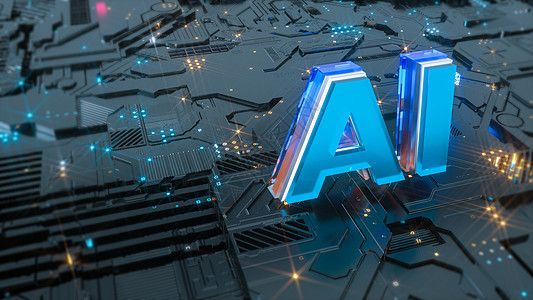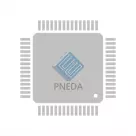New photonic chips: Replace electrons with photons to perform AI mathematical operations

The development and progress of artificial intelligence (AI) cannot be separated from efficient computing chips. Now, scientists are developing a new type of computing chip, the photonic chip. It will replace electrons with photons to perform AI's mathematical operations, further improving AI's computing power and efficiency.
The main advantage of photonic chips is their high speed and low power consumption. Traditional electronic chips are slow and consume a lot of power when processing large amounts of data. Photonic chips do not have this problem, because the speed of light is millions of times the speed of electrons, which makes photonic chips extremely efficient when processing big data. In addition, since photons are not disturbed by electromagnetic fields, the signal transmission stability of photonic chips is higher.
Another advantage of photonic chips is that they can be processed in parallel. Traditional electronic chips can only process data in serial, while photonic chips can process data in parallel, which greatly improves the efficiency of data processing.
The working principle of photonic chips is fundamentally different from that of electronic chips. An electronic chip works by moving electrons through a semiconductor material, while a photonic chip works by propagating photons through a medium. The advantage of this approach is that photons travel much faster than electrons and generate little heat as they travel. This means that when the photonic chip processes a large amount of data, it can not only greatly improve the computing speed, but also greatly reduce the energy consumption.
The basis of photonic chip is photonic technology, the core of which is to use optical elements (such as optical waveguides, grating, lens, etc.) to precisely control the propagation path of light to achieve data encoding, transmission and processing. In the photonic chip, the data is propagated between optical elements in the form of photons, and the calculation and processing of the data are realized through the modulation of optical elements.
The application of photonic chips in the field of AI is mainly reflected in the accelerated calculation of deep learning. Deep learning requires a lot of parallel computing power, and photonic chips can meet this demand. In the photonic chip, the data is propagated between optical elements in the form of photons, and the calculation and processing of the data are realized through the modulation of optical elements. In this way, photonic chips can greatly improve the computational speed of deep learning, reduce computational latency, and improve the real-time performance of AI.
In addition, the photonic chip can also achieve efficient model training. In traditional electronic chips, model training requires a lot of computing resources and a long training process. In the photon chip, the time of model training can be greatly shortened and the efficiency of model training can be improved due to the fast propagation speed and low energy consumption of the photon.
Although the photonic chip has great advantages in theory, many technical problems need to be solved in order to apply it in practice, such as the miniaturization of light source, the integration of optical components, and the efficiency of opto-electrical conversion. However, with the progress of scientific research and technology, these problems may be solved.
In general, the development of new photonic chips has opened up a new path for the development of AI. It replaces electrons with photons to perform mathematical operations of AI, which can not only improve the computing power and efficiency of AI, but also reduce energy consumption. Although there are still some technical challenges, the future development prospects are very broad.
Die Produkte, an denen Sie interessiert sein könnten
 |
2677 | QI WIRELESS CHARGING RECEIVER | 4104 More on Order |
 |
2114 | UNIVERSAL QI WIRELESS CHARGING M | 4968 More on Order |
 |
1192 | SWITCH PUSHBUTTON SPST-NO WHT | 6984 More on Order |
 |
3489 | SWITCH PUSH SPST-NO RED 10MA 5V | 6756 More on Order |
 |
4058 | SENSOR OPTICAL 5-4000CM I2C/PWM | 5616 More on Order |
 |
4007 | ULTRASONIC DISTANCE SENSOR - 3V | 344 More on Order |
 |
352 | AC/DC DESKTOP ADAPTER 12V 60W | 4428 More on Order |
 |
545 | STARTER PACK EL WIRE AQUA 2.5M | 6354 More on Order |
 |
416 | ELECTROLUMINESC STRIP 100CM WHT | 4158 More on Order |
 |
3054 | ADDRESS LED MATRIX SPI GRN/RED | 2844 More on Order |
 |
2477 | ADDRESS LED DISK SERIAL RGB | 8658 More on Order |
 |
1547 | ADDRESS LED STRIP SPI RGB 2080MM | 6372 More on Order |
 |
4310 | FLEXIBLE SILICONE NEON-LIKE SKIN | 6858 More on Order |
 |
4222 | NEOPIXEL TRIPLE-RING BOARD WITH | 4896 More on Order |
 |
1269 | ADDRESS LED 7 SEG I2C YELLOW | 6048 More on Order |
 |
1632 | ADDRESS LED MATRIX I2C GREEN | 5508 More on Order |
 |
2760 | ADDRESS LED DISCR SER RGBW 1=10 | 8676 More on Order |
 |
4168 | FIBER OPTIC LIGHT SOURCE 1W WHI | 5166 More on Order |
 |
3865 | FLEXIBLE SILICONE NEON-LIKE LED | 4500 More on Order |
 |
448 | INVERTER 12V EL WIRE/TAPE | 6894 More on Order |
 |
1350 | INVERTER MINI COIN CELL EL WIRE | 3834 More on Order |
 |
1623 | LED MATRIX 8X8 SQUARE GREEN | 8784 More on Order |
 |
1484 | 32X32 RGB LED MATRIX PANEL 6MM P | 5346 More on Order |
 |
1001 | WHITE 7-SEGMENT CLOCK DISPLAY | 15054 More on Order |









